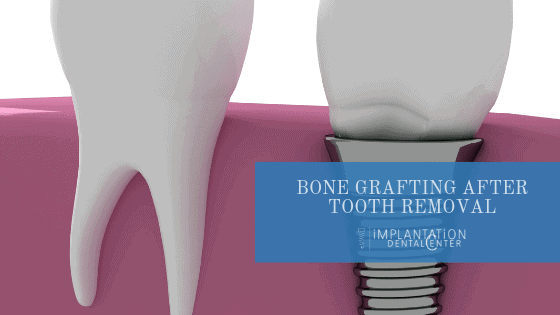Tooth extraction is a very common procedure in the United States. In fact, nearly 50% of adults between the ages of 20 and 64 have had at least one tooth extracted. Following tooth extraction a patient may have a dental implant or dental bridge placed so they can retain function of that portion of their mouth.
Unfortunately, the changes that occur to the bone often affect placement of implants. As bone volume and quality is reduced, functional and esthetic impacts of implants and fixed bridges are complicated.
After a tooth is extracted, the healing process results in defects of both the hard and soft tissue. This loss of tissue causes changes to the jaw structure which affects the patient both esthetically and functionally. This then can cause problems with the functionality of implants in a later stage.
Tooth extraction can cause up to 50% of the alveolar bone dimension to be lost. This is as much of 6-7mm of bone tissue lost in the horizontal dimension. The reduction in bone volume typically occurs within the first three months after the extraction. There can also be bone loss to the vertical ridge. This is less common but still can span as much as 2-4mm. Of course, this causes the structural and functional complications that can have a lasting impact on the health and well-being of the patient.
Minimizing Bone Tissue Loss with Bone Grafting
These instances can be prevented using bone grafting. This technique aims to limit the amount of hard and soft tissue loss after tooth extraction. Evidence has shown that this technique has been beneficial.
Studies have been conducted to measure the validity of this technique. The results show that sockets that were preserved with bone grating lost an average of 2mm less of their width and 1mm less of their height. These cases also had 20% higher bone volume than those who did not receive bone grafting.
While it doesn’t entirely eliminate bone loss, it does significantly reduce the amount loss and, therefore, improve patient outcomes.
Types of Bone Grafts
Interestingly enough, bone grafts are constructed with different materials. The appropriate graft varies depending on the patient’s situation. The appropriate graft material will facilitate the three tenets of bone regeneration. These are space maintenance, clot stability and bone-forming cells. With the right graft, a patient can recover successfully without complications. The wrong choice can lead to graft failure or other serious consequences.
When to Use a Bone Graft
It’s important to note that not every tooth extraction requires a bone graft. A preoperative assessment will determine which instances would benefit from bone extraction and grafting. These valuations depend on the state of the patient’s teeth, clotting instances, and other important factors.
As with everything else, you should always consult a trusted dental professional before undergoing procedures. Your dentist or prosthodontist will recommend the best course of treatment based on your individual case.
If you are interested in learning more about tooth extraction and bone grafting, you can call our office to schedule a consultation or appointment.



